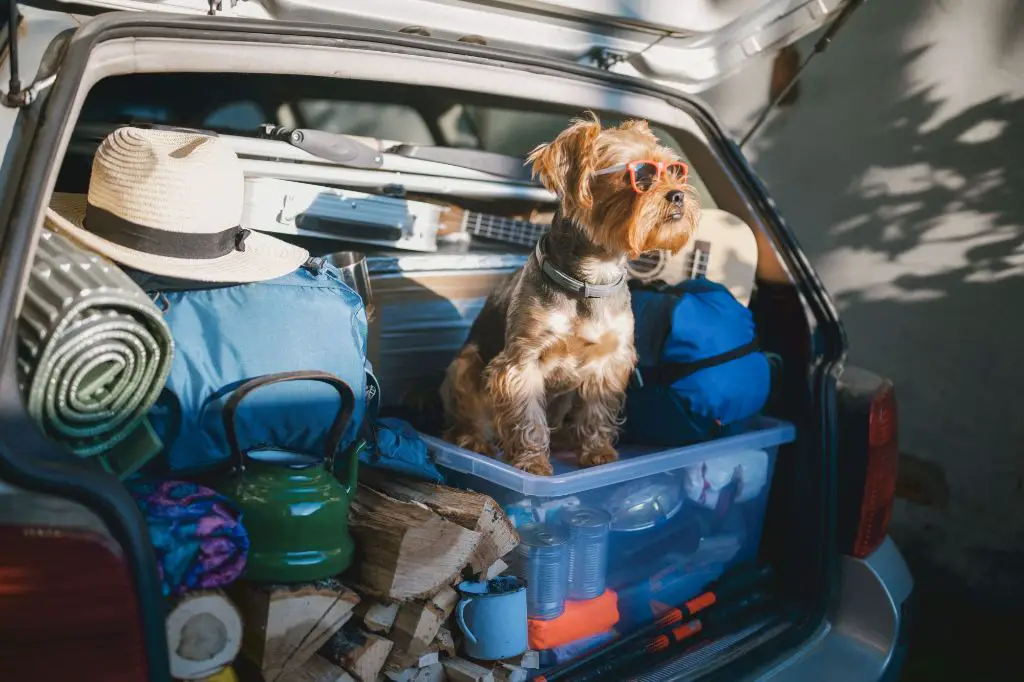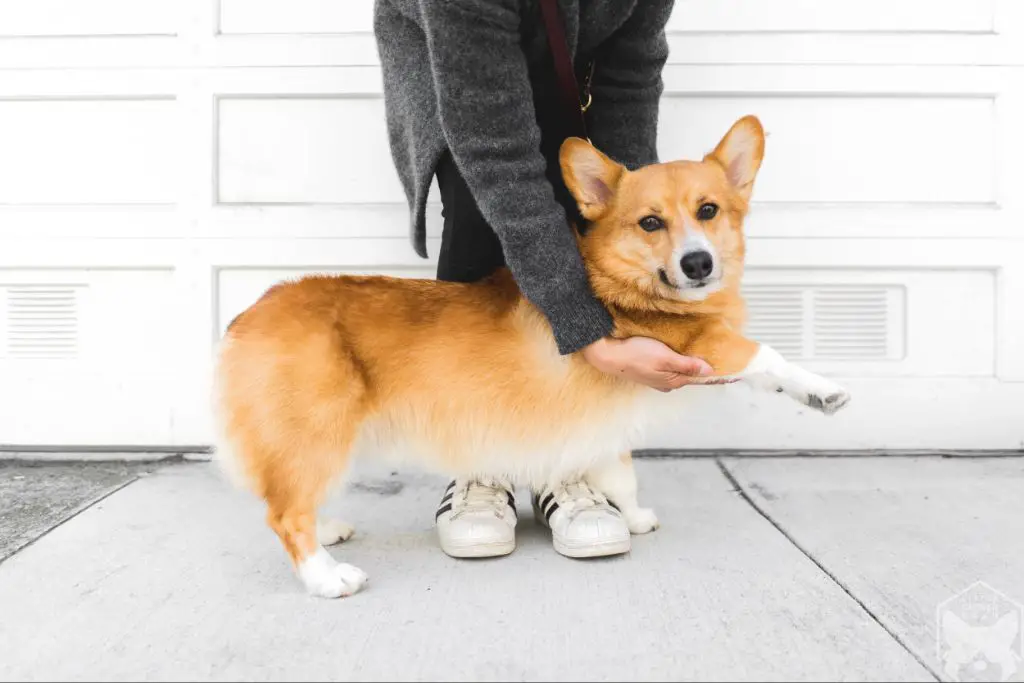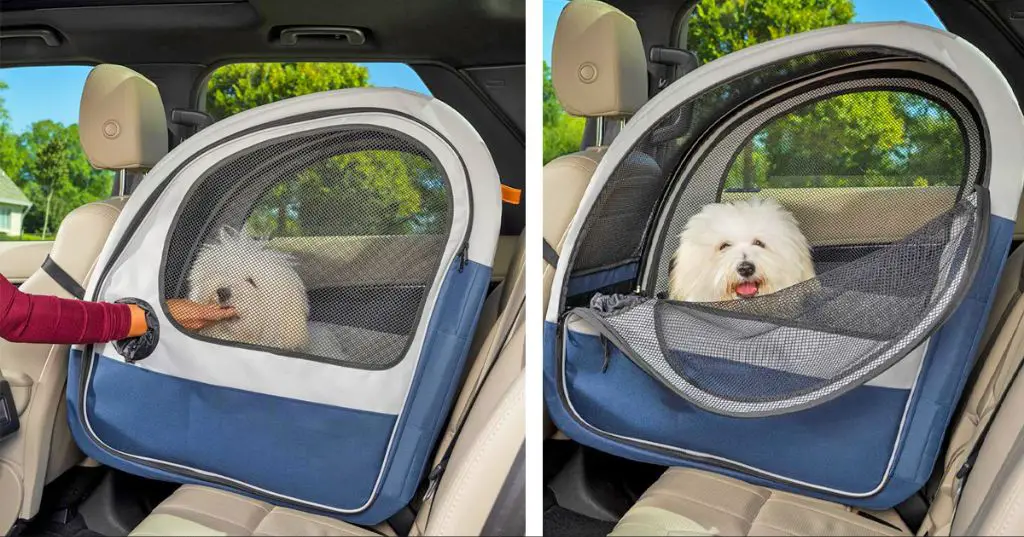Can Dogs Safely Travel for 12 Hours?
For many pet owners, bringing their canine companions along on road trips and vacations is a no-brainer. Dogs love exploring new sights and smells, their excited energy can liven up any car ride, and they provide great company wherever you go. But is it safe for dogs to travel in a car for 12 hours straight? What steps should you take to keep your pup comfortable and happy on an epic road trip adventure?
Is it safe?
When considering longer car trips with dogs, it’s natural to be concerned about potential health risks. Spending 12 hours or more cooped up in a vehicle can certainly be stressful for canines. However, with proper planning and precautions, extended road trips can be accomplished safely.
One of the biggest risks is dehydration. Dogs cooling themselves through panting can lose moisture quickly, especially in warm weather. Bringing ample water and scheduling regular potty/water breaks every 2-4 hours will help keep your dog hydrated. Prepare collapsible bowls and bottled water to provide easy accessibility.
Sedentary confinement during long drives can also pose circulation and joint problems for dogs. Schedule occasional stops to let your dog walk around, stretch their legs, and get the blood flowing. If possible, fold down seats to give your dog more room to shift positions and move around.
Care should be taken not to overfeed before or during travel, as vomiting in the car can be dangerous. Feed smaller, easily digestible meals and bring snacks like small kibble portions. An empty stomach can also cause nausea, so don’t let your dog go too long without a bite.
With preparation for adequate hydration, activity, and digestion, dogs can comfortably handle 12 hours in a car. Monitoring your dog and planning regular stops will keep them healthy for the long haul.
Preparing for the trip

Proper preparation is crucial to ensuring your dog’s comfort and safety during a long road trip. Here are some tips on getting ready:
Supplies Needed
Bring ample food and water to last the whole trip. Pack their regular kibble as well as high-value treats. Bring collapsible food and water bowls. Have plastic bags and paper towels on hand for cleanups. Pack their medications if needed. Bring their bedding and favorite toys for comfort. Have a crate or carrier in case they need confinement during the trip.
Pre-Travel Vet Visit
Schedule a vet visit 1-2 weeks before traveling. Make sure your dog is up-to-date on vaccines and free of illness or injury. Have the vet ensure your dog is fit for travel. Get any medications refilled that they may need on the trip. Ask about anxiety medication if your dog struggles with travel. Get health certificates if crossing state lines.
On the road
While on the road, it’s important to take regular breaks so your dog can relieve themselves, stretch their legs, and get some fresh air. Plan to stop at least every 2-4 hours. Look for pet-friendly rest stops or take them on a short walk around parking lots or fields during stops. Make sure your dog has access to water at all times and offer small snacks/meals during long trips.
Don’t let your dog out near busy roads or truck stops. Bring a leash and clean-up bags. Watch your pet at all times and be mindful of safety. Avoid leaving them alone in the vehicle.
Your dog may get anxious, restless, or carsick during the drive. Bring their favorite toys, treats, and blankets. You can also try soothing music, rolling down the windows, or distracting them with a fun game. If signs of anxiety or nausea persist, consider talking to your vet about mild sedatives or anti-nausea medication.
With proper preparations, planning, and care – your dog can comfortably handle a long road trip adventure!
Arriving at destination
After a long 12 hour trip, your dog will likely feel stressed and anxious upon arriving at the new destination. Here are some tips to help your dog decompress:

Allow time for potty and walking – Take your dog out right away to relieve themselves and get some exercise. After being cooped up they’ll need time to stretch their legs. Walk them around the new environment so they can get familiar with the new sights and smells.
Provide access to water – Make sure your dog has plenty of fresh water available to rehydrate after the long journey.
Give a relaxing space – Set up a comfortable, quiet area for your dog to rest, like a dog bed or crate lined with familiar blankets. Keep the area dark and soothing.
Engage in calming activities – After letting them settle in, do some light play or cuddle time to help your dog relax. Gentle praise and massages can be calming.
Stick to routine – Try to keep a similar feeding and potty schedule as you have at home so their life feels consistent.
Limit excitement – Hold off on highly stimulating activities like dog parks or playdates for the first day or two. Let your dog take it easy while adjusting to the new place.
Be patient and keep interactions positive – Your dog may feel unsure in the unfamiliar environment, so be patient with any minor behavior changes. Keep your energy calm and interactions cheerful.
Activities at destination
After such a long trip, your dog will definitely need some exercise and enrichment at the destination. Be sure to allow plenty of time for walks, play, and exploring new smells and environments. Some great activity ideas include:
- Long walks – Make sure your dog gets at least 30-60 minutes of walking per day. Walking helps relieve stiffness from the long car ride and provides mental stimulation.
- Hiking – If you’re staying near hiking trails, take your dog on scenic hikes. Just be sure to bring plenty of water.
- Swimming – Dogs love swimming! Look for dog-friendly lakes or beaches where your dog can take a dip.
- Playing fetch – Find an open field or park where you can play fetch, allowing your dog to run and burn off energy.
- Nose work – Hide treats around your accommodation and encourage your dog to search for them. This provides mental enrichment.
- New sights and smells – Expose your dog to new environments, sights and smells to provide mental stimulation.
The destination is your dog’s reward after the long travel. Make sure to provide plenty of exercise, play and enrichment so they can enjoy their vacation too!
The return trip
After spending time at the destination with your dog, you’ll eventually need to start planning for the return trip home. While some dogs may get comfortable at a new location, most will be eager to return to their familiar home surroundings. Here are some tips for getting your dog ready to travel again for the long return trip:

- Re-acclimate your dog to the travel crate and car – Take some time before the return trip to reintroduce the travel crate and car rides to your dog so the long drive home isn’t completely foreign again. Take them on short drives and spend brief periods in the crate to remind them of travel routines.
- Plan for potty breaks – Make sure to plan adequate potty breaks for your dog during the drive home. Try to use the same rest stops as you did on the initial trip for familiarity.
- Bring their favorite toys/blankets – Pack the travel crate with your dog’s preferred toys or blankets from home to help comfort them. Familiar smells will help relax them.
- Stick to a routine – Try to maintain a similar feeding and walking schedule as you did on the initial trip. Following a routine will help prevent digestive issues.
- Make time for exercise – Ensure your dog gets exercise at rest stops to work out extra energy. Exercise will make them calmer in the crate.
With some planning and preparation, you can make the return road trip smooth and comfortable for your canine companion.
Back at home
After a long trip, your dog may need help readjusting when you return home. The sudden change in environment and routine can be jarring for dogs. Here are some tips to make the transition smoother:
- Keep an initial low-key homecoming without lots of guests or activities. Allow your dog to relax and settle back in.
- Stick to your dog’s normal routine as much as possible. Take them for walks at the usual times and feed them their regular food.
- Be patient if your dog seems a little unsettled. It may take a few days for them to adjust to being back home.
- Give your dog affection and reassurance. Provide comfort through petting, brushing and spending quiet time together.
- Introduce household members gradually if your dog doesn’t see them daily. Too many reunions at once can feel overwhelming.
- Take your dog to familiar parks or walking routes. Returning to their old haunts can help them settle in.
- Consult your vet if signs of anxiety or unusual behaviors persist more than a few days.
With time and patience, your beloved companion will be back into their home routine. The trip may have been exciting, but there’s no place like home for a tired dog.
Signs of Stress

After traveling a long distance, even well-prepared dogs may show signs of stress and anxiety. Some common indicators that a dog didn’t handle the trip well include:
- Excessive panting, drooling, or shaking during or after the trip
- Vomiting or signs of motion sickness
- Loss of appetite or refusal to eat
- Diarrhea or other gastrointestinal issues
- Whining, barking, or crying more than usual
- Hiding or seeming withdrawn and depressed
- Restlessness, pacing, or inability to settle down
- Aggression or unusual behavior like nipping or growling
If your dog displays multiple or prolonged signs of stress, it’s a good indication they did not handle the long travel time well. Discuss any concerns with your veterinarian and consider shorter trip distances in the future.
Conclusion
In summary, with proper preparation and planning, dogs can safely travel for 12 hours or more. The key is taking regular breaks, keeping the dog comfortable, providing food and water, and monitoring for any signs of stress or anxiety. Limiting driving time to 8-10 hours per day and staying overnight in pet-friendly lodging can make longer trips more manageable. It’s important not to overdo it – pay attention to your dog’s needs and wellbeing throughout the trip. Some final tips include bringing your dog’s bed and toys to make them feel at home, keeping the temperature comfortable, and playing calming music. With care and caution, you and your furry friend can enjoy exciting travels and new adventures together.